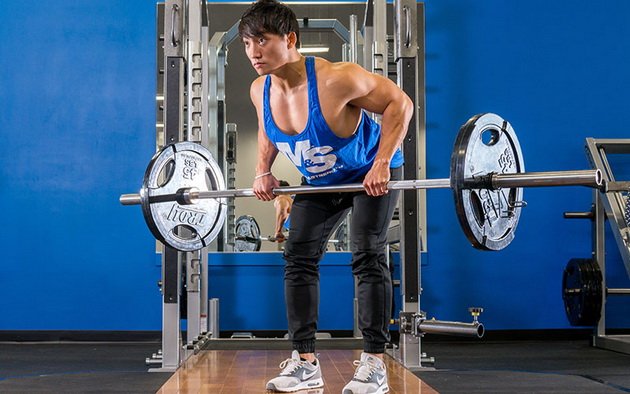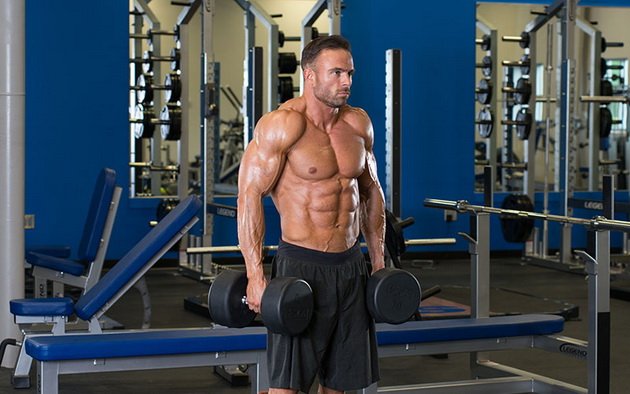In the gym, I often hear the question, “So if I want to build muscle, do I need to use a lot of weight with low reps?” On the other side of the training medal is another question: “To dry out, you need multi-repetitive workouts with light equipment, right?”
Imagine the surprise of people when I give the same answer to both questions – you have to take heavy shells and do a lot of reps. Usually, athletes follow the tried-and-true schemes of 5 sets of 5 times, 3 to 10, and so on, and it is difficult for them to understand me. To explain your position, you have to start a long monologue about a voluminous training.
What is volumetric training?
My definition of volumetric training (OT) is a combination of many sets, reps and / or exercises. A common mistake in volume training is to choose equipment that is too light, which makes it easier to complete the intended number of sets or reps. Choosing the right weight is the key to success.
When writing strength training programs, the percentage of an athlete’s 1 repetition maximum (1RM) is usually taken. An example is a 5×5 bench press program that uses 75% of 1RM.
For volume training, I prefer to select resistance based on Maximum Repetitions (MP) or Weight for Maximum Repetitions (MPP). MP is the maximum number of repetitions that you are guaranteed to complete with a given weight or with a body mass, and VMP is the working weight that you take in sets for a given maximum repetitions.
Why calculate the percentage of 1MP
You may ask why is this important or necessary when choosing a working weight? Let’s say I put together a squat routine that requires a total of 25 MP5 squats. If you think you can just grab a barbell and do 5 sets of 5 reps, you’re wrong.

The weight you do 5 sets of 5 reps with is usually lighter than VPM5. If you squat 5×5 with a barbell of 125 kg, your real VMP5 will be 145 kg. Keep in mind that VMP5 is not the weight you “calmly” do 5 reps with. This is a real maximum of 5 times, with which you leave your last strength in the fifth repetition.
With this technique, you start your sets with five squats with a 145kg barbell and continue doing sets until you’ve done all 25 squats – even if you’re tired at the end of your training session and your sets will be 1-2 squats. You will most likely need more than 5 sets, and in 25 squats, you will lift more weight than if you were working in a 5×5 pattern.
The key to success is choosing a fairly heavy apparatus and doing as many reps as possible in each set. The goal of volume training is to do more reps, not more sets with increased reps.
There is one important point to make here. The 1RM Percentage System is great for bench presses, squats, or deadlifts, but what about exercises like dumbbell shrugs, two-handed kettlebell swings, or weighted crunches? In most exercises, it is much more difficult to determine the 1RM and, as a result, the percentage of 1RM.
VMP for supersets
I have not met a weightlifter who knows his 1RM in raising his arms to the sides. In an exercise like this, it is easier to determine the BMR10 than to guess what the 1RM should be. This is especially useful when composing supersets. Here’s an example of a great shoulder workout superset that I use regularly:
Due to the high volume nature of this superset, your shoulders will be very tired after the first two rounds. Instead of grabbing lighter dumbbells, use the equipment you started with. That is, the starting weight with which you perform the planned number of repetitions with fresh strength.
By the fourth round, the number of repetitions may look something like this: 4 – in the overhead dumbbell press, 8 – in raising the arms to the sides, 12 – in breeding to the rear deltas, 15 – in shags with dumbbells. Despite the decrease in reps in the set, you continue to work with heavy equipment in all exercises.
VMP for high volume workouts
Another example of the importance of VMP is a timed workout consisting of 100 kettlebell swings with both hands and 50 hang-ups.
If you randomly choose a 28 kg kettlebell and a 45 kg barbell, your workout can be easy or hard. But what if you know the recommended VMP10 for each exercise? You may be able to do 25 two-handed swings with a 28 kg kettlebell and 20 chest lifts with a 45 kg barbell.
Your real starting VMP10 should be around 40 kg for kettlebell and 60 kg for barbell, which will make your workout much more difficult and lengthy. You will need more sets to complete the intended reps for each exercise. Instead of 4-5 rounds, the training session will consist of 10-15 sets before you get to the finish line.

VMP for power circuit full body workouts
Weights for maximum repetitions are not only needed for high volume training, they can also be useful when building strength supersets. Here’s an example of a great full body workout that’s guaranteed to put even an experienced lifter to the test. Do barbell squats, one-handed dumbbell rows and bench press with your head tilted with VMP5.
Do 5 superset circles with these three exercises, doing as many reps as possible on each set. Rest only during the transition from one shell to another.
Chances are that you will do less than 5 reps on the second round, but keep working until you have completed all five rounds, even if at the end you have mastered no more than 1-2 reps per set. This will test your strength and endurance.
Now you have three ways to apply this technique: supersets for a specific body part, high volume and full body circuit strength training. By understanding which weights to exercise, you will benefit from high volume training much more than simply doing a series of repetitions.
